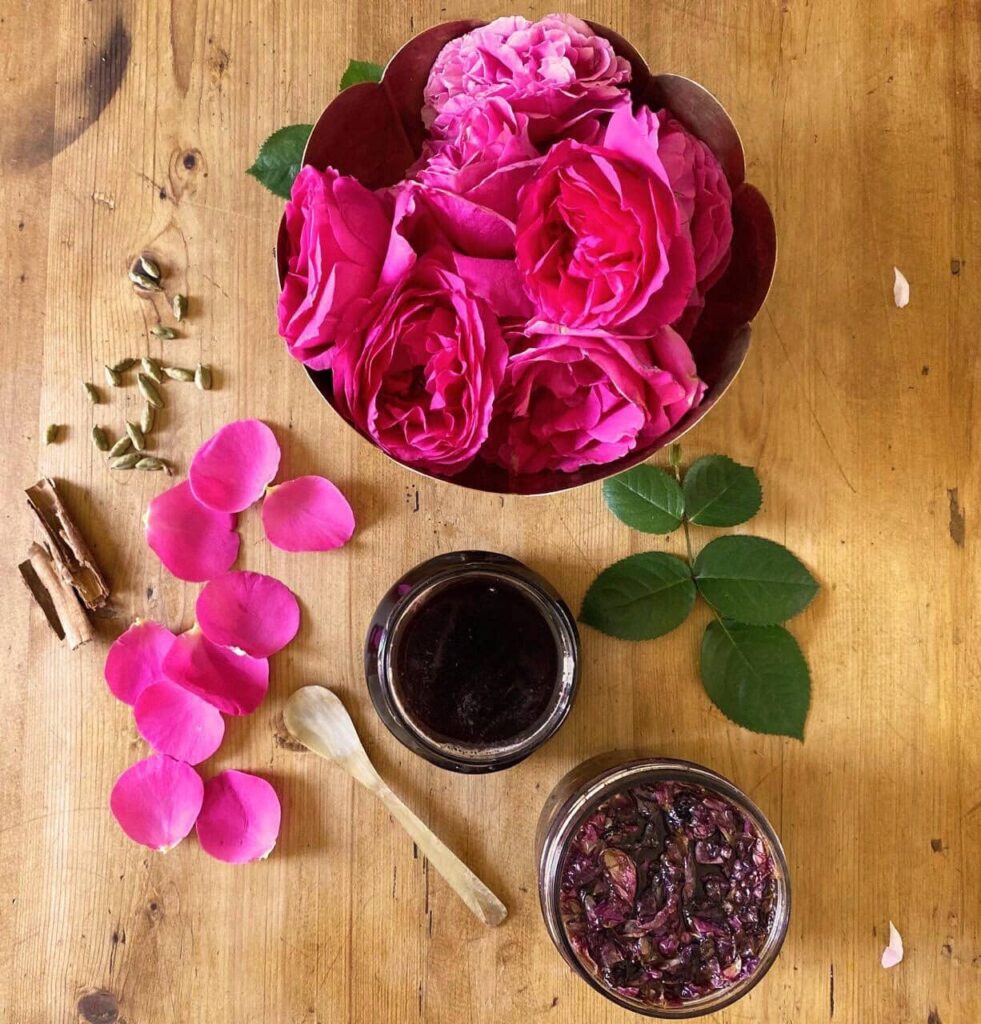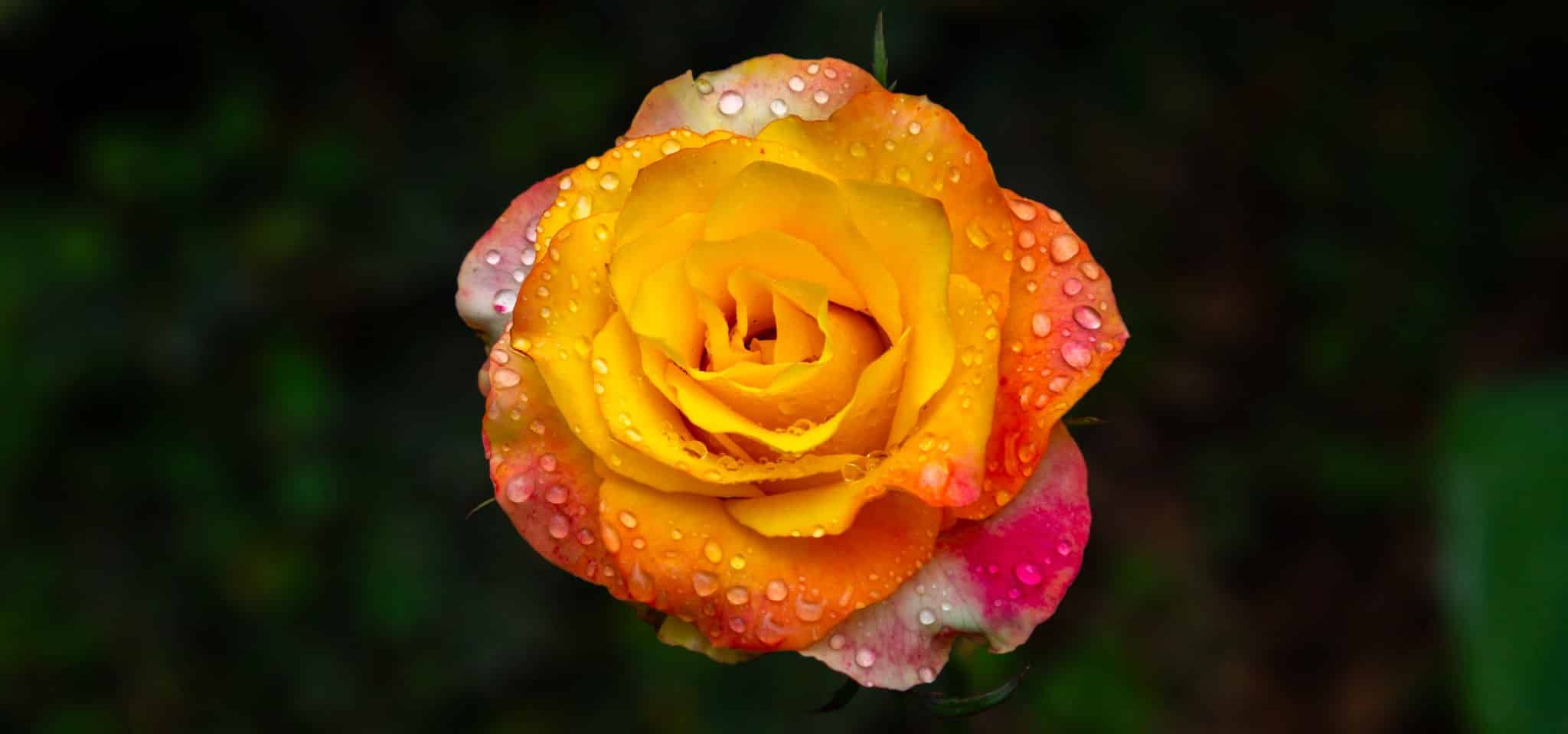Healing your emotions and mind with Sadhaka Pitta and Prana Vata balance
Understanding the connection between emotions and mind in an Ayurvedic Perspective to heal our relationship.
The experts of Ayurveda have long understood the importance of emotional health. This science of natural health offers a variety of strategies and specific recommendations to keep emotions in balance throughout a lifetime.
From an Ayurvedic perspective, emotional ill-health is caused by the lack of coordination between an individual’s senses, emotions and thoughts. In the Ayurvedic viewpoint, the heart and mind are intimately connected. When that connection is weakened, problems arise.
In Ayurveda, the inability to process emotions in a timely manner is seen as the main cause of emotional imbalances. So the Ayurvedic emphasis is on efficiently processing and digesting emotions. Our emotional health is affected by a sub-dosha of pitta called Sadhaka Pitta, which is located in the brain and heart and functions through the nervous system. It governs mental energy, creativity, beliefs and emotions, our powers of analysis and discrimination, and is responsible for motivation, self-confidence, and feelings of fulfillment.
People with weak Sadhaka Agni are more prone to holding onto grudges and traumatic experiences from the past, the anger still lives and breathes within and is still lodged in the heart and mind, the memory stirs the emotion felt years ago and results in a low mood. This causes great harm to the body – chemically releasing poison – like toxins into the system. On the other hand, a person with an overactive Sadhaka Agni will be more likely to react irrationally, recklessly and even violently. When our Sadhaka Pitta is out of balance, due to emotional stress or excess pitta, we will experience wild mood swings, from irritability to moodiness from anger to sadness.
We may also have pitta-style depression, which includes being domineering, controlling, intolerant, critical (of self and others), intolerant and having the inability to concentrate. It may affect our relationships. There may also be pitta insomnia (waking up early in the morning with lots of energy), or inflammatory conditions, such as allergies, dermatitis, heartburn or diarrhea.
The Sadhaka Pitta can be especially out of balance for women during menopause – resulting in the characteristics wild mood swings and hot flushes. A long-standing pitta imbalance can lead to early menopause. The goal is balance. When your Sadhaka Pitta is in balance, you will feel blissful. You will have a balanced, an even temperament.
People with a strong Sadhaka Pitta have a quick response time, but not in the ferocious, reactive sense. The speedy response time comes from a clear and aligned heart-to-head connection that makes it easier to distinguish truth and reality from the convoluted information conveyed by the senses. But just as junk foods can weaken our digestive fire, poor lifestyle choices and stressors can also weaken our Sadhaka Pitta and disrupt the connection between heart and mind.
Sadhaka Pitta connects the heart and mind together so that the two can communicate with each other. Each dosha (vata, pitta, kapha) has five subdoshas, which involve different organs and perform different functions in the body. All 3 doshas also reside in the heart, along with Prana, Tejas and Ojas, the subtle forms of the doshas and the 3 Gunas, Sattwa, Rajas and Tamas. This means that our mental and emotional state can be influenced by the balance of all of these and likewise the mind has the power to substantially influence our physical health. Every experience we have, each thought, feeling, and our lifestyle has its impact on the doshas and subsequently on our health and vice versa.
The three main subtypes of the doshas that relate to our mental and emotional state are:
Prana Vata
Connected to higher cerebral functions Prana Vata governs the movement of the mind, thoughts and feelings, and is correlated with the brain’s neuro-electrical activity. It promotes enthusiasm, inspiration, mental adaptability, the ability to communicate and coordinate ideas in the mind. Prana Vata is considered the most important aspect of Vata and directs the other 4 sub-doshas of Vata. Since Vata leads the body as a whole, keeping Prana Vata in balance has significant ramifications on our health as a whole.
When Prana Vata is disturbed we may feel restless, anxious, ungrounded and spacey, disorganized or overwhelmed; it can cause fear and insecurity, insomnia (waking between 2 and 3 am), nightmares and physical neurological problems including palpitations, tremors, Parkinson’s disease, epilepsy and dementia. Long term disturbance of Prana Vata can lead to exhaustion, chronic anxiety, panic attacks, and depression that can be changeable and yet intense.
Sadhaka Pitta
In anatomical terms, the Sadhaka Pitta subdosha governs biochemical substances, includes the neuro-transmitters responsible for dopamine and serotonin. and is responsible for the blood flow through the heart and emotions connected with it. It is responsible for homeostasis (regulating body temperature) and regulating the hypothalamus (which controls important hormones and the nervous system) in the brain. An unbalanced Sadhaka Pitta essentially means unbalanced hormones.
Tarpaka Kapha
Provides nutrition, strength, protection and lubrication to the nerves and promotes storage and recall of sensory input, ie memory. It composes the myelin sheath, the meninges and the cerebrospinal fluid that circulates round and protects the brain and spinal cord. Tarpaka means contentment; it slows neural activity, inducing relaxation, contentment and emotional stability. Its inward movement helps us to experience the inner joy of being ourselves. In deep sleep or meditation Tarpaka Kapha becomes active, representing the awakening of the Saksi, the witness of consciousness. It protects the mind from excess heat (Sadhaka Pitta) generated by critical thinking and heated emotion and from too much mental activity (Prana Vata). Meditation promotes its secretion. Kapha people are generally placid and resilient, slower to react emotionally. Excess Tarpaka Kapha causes them to become lethargic, withdrawn, unmotivated, possessive, and overly attached to people or things. They might comfort eat, put on weight and are reluctant to take exercise, sitting for hours doing very little. This creates a platform for prolonged depression and letting it go further and deeper into the system.
Deficiency of Tarpaka Kapha can cause nervousness and insomnia and symptoms of excess Prana Vata, including memory loss, lack of contentment and problems such as MS, and dementia.
The Sadhaka Pitta has an inward movement, which essentially sorts out our external experiences into an internal ‘felt’ experience. It distinguishes truth and reality from the information from the senses. This subdosha is responsible for things such as desire, drive, decisiveness, discrimination, intelligence, contentment, motivation, self-confidence, memory, emotional balance, and even spirituality. The Sadhaka Pitta helps us fulfill both our material and spiritual goals in life. Inside the heart, according to Ayurveda, there are two main energies –Agni (sun energy) and soma (lunar energy). These need to be kept in balance. If Agni is too strong, through emotional and mental stress, it will burn away soma, and lead to reduced Ojas, or vitality. Like our agni, Sadhaka Pitta is an internal “fire” that mentally “cooks” our experiences for us.
The Charaka Samhita says this: hridaye chetana sthanam, « the seat of consciousness is in the heart and brain». Sadhaka Pitta is the caretaker of the heart. The enquiry, therefore, of Sadhaka Pitta, which is stated to be located in the Hridaya and held to be responsible for some of the higher mental activities as also for some of the emotional states. This Hriday performs and regulate the functions of nervous system and circulatory system. In cerebrovascular accidents, both organs are affected. Recent study reveals that heart and brain interact in a dynamic relationship that regulates many aspects of cognition and emotional experience.
There is more information that moves from the heart to the brain than the other way around and this information influences regions in the brain that affect decision making.
The above reference suggests that heart and brain are functionally related with each other. The heart has its own intrinsic nervous system that operates and processes information independently of the brain or nervous system. It has long been thought that conscious awareness originates in the brain alone. Recent scientific studies suggest that consciousness emerges from the brain and heart acting together. Neuroscientists have found that the heart has its own independent nervous system – a complex system referred to as ‘the brain in the heart’. The heart communicates with the brain and the rest of the body in three ways documented by solid scientific evidence: neurologically (through transmissions of nerve impulses), biochemically (through hormones and neurotransmitters), and biophysically (through pressure waves). In addition, growing scientific evidence suggests that the heart may communicate with the brain and body in a fourth way – energetically. Through these biological (through electromagnetic field interactions) communication systems, the heart has a significant influence on the function of our brains and all our physical systems.
Far more than a simple pump, as was once believed, the heart is now recognized by scientists as a highly complex system with its own functional brain. Researches show that heart is a sensory organ and a sophisticated center for receiving and processing information. The nervous system within the heart (heart brain) enables it to learn, remember, and make functional decisions independent of the brain’s cerebral cortex. It is also clear that heart and brain has functional similarity and Ayurvedic science has described functions of Hriday which is quite close to above. Ayurveda described brain and heart under one roof. Hriday which indicates both organ. Now it is proved that the thoracic heart now has its own functional brain. The heart is not only single pump but heart is sensory organ and sophisticated center for receiving and processing information. Thus in addition to the circulation of the blood, the heart works as a brain also.
So the studies validate this ancient wisdom by showing that the heart sends information to our brain on how to process an experience emotionally. Knowing this, it is easy to see how emotional imbalances stem from a negative mind that is unable to process life’s happenings and let go of the emotions that follow. The emotions and mind can both aggravate each other so it becomes a vicious cycle if not healed with the proper practices and remedies.
Pitta is a Sanskrit word means illumination often associated with the brilliance, which radiates from fire. The elements fire and water combine to form Pitta dosha. It is the principle of transformation energy. It governs heat, digestion, and metabolism. Pitta is composed of fire and water. Pitta energy is responsible for digestion, metabolizes food through enzymes and intestinal secretions and converts into blood, bones, muscles, etc. Pitta maintains body temperature and hormonal levels; trigger hunger and thirst; provides complexion to the skin; sharpens the intellect and memory; enhance daring, courage and will. Pitta energy in the mind is considering as mental fire necessary for will power, decision-making, courage, ambitions, optimism, intelligence and creativity.
Sadhaka Pitta governs mental energy, creativity, beliefs, emotions. It is also responsible for motivation, self-confidence and a feeling of fulfillment. Sadhaka Pitta’s most important function is to connect the heart and mind so that they can work in conjunction.
Prana Vata is a sub-dosha of Vata Dosha. It is commonly known as the ‘life force’ within our body. It governs the brain, head, chest, respiration, mind etc. The main purpose of Prana Vata is to regulate the workings of the nervous system.
Doshic imbalances, nutritional deficiencies, as well as toxic accumulation, can cause undue stress on the individual physiology and nervous system, creating problems in communication, eventually challenging and weakening the emotional bond and bringing about relational problems. The main suspects of this are Prana Vata and Sadhaka Pitta imbalances.
Prana Vata
In Ayurveda the principle that governs the flow of energy in and out of the mind, keeping things in check and running is related to the movement of Prana Vata. If you work in a stressful environment, spending plenty of time on computers, or other EMF devices, then you are prone to imbalance your Prana Vata. Over-exposure to EMF devices increases and imbalances Prana Vata by burning the Soma in your body. Soma, is the presence of soothing cooling and nurturing energy in our physiology. It keeps things in check, stable and balanced.
When Prana Vata goes off, you may experience undue incessant anxiety, lack of focus. If you don’t fix this, then your imbalance will build up and start to disrupt your sleep – you may feel tired even if you sleep long hours at night as your sleep will become lighter and less restful. Or you may feel you are not able to fall asleep even though you feel tired. Eventually, this will bring about emotional irritability – you will feel you are emotionally cranky for no evident reason. When Vata goes high, it dries up the Soma in your physiology. Soma is what keeps us grounded, calm, and balanced. When you lack Soma, you may feel more dryness in your body – this will be expressed in different ways in your physiology, it can either be through dry .skin, or dry stool, etc.
When Vata is high and Soma goes low, this disrupts the balance of Ojas. Ojas the is the finest bi-product of digestion and overall cellular metabolism. It is also the factor that is intimately connected to our hormonal balance. When Ojas is out of balance, we may experience .hormonal imbalance. If your hormonal balance goes off, you will be less receptive to the love and affection coming from your love ones. Negativity may also set in like a silent dark cloud, and everything starts to look grey and glum. This can result in undue strain on your relationships. You will think “what is wrong?” “what has changed?” but not be able to do something about it.
We need to find out what it is that is triggering your Prana Vata imbalance.
What the “hetu” or root cause is. Is it :
- over-exposure to EMF
- Consistent late bedtimes
- Lack of balance between rest and activity
- Eating drying foods
- Skipping or delaying meals
Whatever your hetu, try to address and minimize the imbalance as much as possible also by adopting a Vata pacifying diet. Add to your weekly self-care ritual self-massage.
Incorporate meditation into your daily routine – 20 minutes even once a day, try to slow down and shift gears to have a balance between rest and activity.
Sadhaka Pitta-pacifying diet
- Eat food that gives sweet quality to help balance out the emotions.
- Avoid spicy, pungent foods, salty foods, and sour foods.
- Avoid white sugar, red meat, alcohol, cigarettes, caffeine.
- Drink lukewarm herbal teas such as peppermint and chamomile.
- Drink coconut milk with rose water added.
- Don’t skip meals, especially breakfast.
- Drink lots of water with lime or rose syrup.
Sadhaka Pitta-pacifying lifestyle
- Speak sweetly to others, do activities that are calming.
- Nourish the emotional heart.
- Listen to soothing music.
- Avoid overworking, allow time for rest and fun.
- Avoid the sun and being out in hot weather.
- Have a gentle stroll in the early morning or evening.
- Go to bed before 10pm.
- Seek calm, quiet places, like the forest/bush, parks, gardens.
- Avoid emotional confrontations specially at meal times.
- Massage your body with cooling coconut oil before a shower.
- Meditate, do pranayama.
- Choose people who are calm and nurturing to be around.
Sadhaka Pitta imbalance is one of the most prominent imbalances. It creates most of the problems in relationships.” Sadhaka Pitta is the principle that allows to determine the balance in the emotions, whether an individual is feeling upbeat or down and low. Sadhaka Pitta can get aggravated due to many different hetu-s or causes.
It is interesting to know is that the most prominent hetu or cause for a Sadhaka Pitta imbalance is:
A low protein diet, B12 deficiency
Yet other hetu-s may result from:
- not eating on time
- skipping and delaying meals
- having tea or coffee on empty stomach
- consuming alcoholic beverages
- having a pitta predominant constitution and eating too much pungent food
- watching emotionally disturbing movies
- going to bed late
These are particularly true for the pitta predominant individuals who become vegetarian. When the diet changes and does not contain enough protein to balance the high pitta, then the individual will become emotionally sensitive and even cranky. In this situation, it will be hard for them to perceive the love and affection coming from partner. In other circumstances, they may doubt or become suspicious; harbor emotionally negative thoughts. It will become very difficult for a high Sadhaka Pitta individual to trust and thus to get involved in or maintain a good relationship. They may self-sabotage.
What can you do?
- Do not delay your meals under any circumstance. Eating on time will make sure that your body’s chemistry does not go off affecting your mind and hearth’s emotional balance.
- Make sure you incorporate some animal protein into your diet; this does not necessarily mean eating meat if you have chosen to become vegetarian, you can also just add, yogurt, fresh homemade cheese (paneer); beans and legumes.
- Rose is the Pitta individual’s best friend – Rose Marmalade, Rose Jam, Rose petal preserve; Rose Essential oil; Rose water, infuse Rose buds for a soothing cup of tea; etc.
- Alternately, you can also incorporate other cooling and soothing ingredients such as sandalwood.
- Make sure you have something to eat every 3-4 hours – snack on fruits or a healthy snack (soaked nuts and dry fruits, homemade muffins or scones) to keep your pitta in check.
- Keep a pitta pacifying diet – nothing sour (vinegar, lemon); avoid onion and garlic; stay away from pungent spices and chillies; etc.
- Add Magnesium in your diet.
Other herbs and products that help soothing both Vata and Pitta:
- Amla
- White sandalwood
- Brahmi powder or oil
- Gotu Kola
- Ashwagandha
- Coconut oil
- Bringaraj
- Arjuna
- Shatavari
Benefits of Rose Petals for balancing the connection between heart and mind
The medicinal properties of Rose petals are attributed to their abundance of phenolic compounds. Phenolic compounds possess a wide range of pharmacological properties including antioxidant, free-radical scavenging, anticancer, anti-inflammatory, antimutagenic, an antidepressant etc. Rose petals are very rich in mineral salts and vitamins C. Has a Calming Effect on your Body and Mind
A rose literally sooth the heart and balances the mind. It enhances the coordination between Sadhaka Pitta and Prana Vata. By balancing Sadhaka Pitta it enhances positive emotions and intensifies the experience of happiness and bliss.
Rose is cooling and balancing for pitta. It enhances the coordination between the heart (Sadhaka Pitta) and the mind (Prana Vata). Rose has traditionally been used to help depression and anxiety. Rose petal conserve or rose water can be taken, or cooked with. Use rose water spritzer for the face to cool down. Perhaps this is why the rose is a symbol for the heart – the two are intimately connected. Rose enhances positive feelings, especially love. It is especially good in summer when pitta is high.
The traditional marmalade of Roses is a delicious sweet preserve made using fresh rose petals and honey and is mildly flavored with green cardamom and cinnamon, and is sun-cooked. In Ayurvedic medicine call Gulkand is a traditional Indian recipe with many healthy benefits. Is a powerful antioxidant and a very good rejuvenator. It helps to improve appetite and helps in digestion and has a cooling and calming effect on the body. It reduces body heat and protects the body from sun stroke particularly during Summers. It has been traditionally used as a cooling tonic to combat fatigue, lethargy, muscular aches, itching and heat-related conditions.
The sun-cooked rose petals for maximum nutrition conservation is often compared to rose petal jam and jams that are easily available in the market. It is far superior in taste and nutrition as well due to the method of preparation. It can be sun-cooked over a period of one month; thereby imparting a rich, dense, floral flavor to the delicacy. Jams, on the contrary, requires rapid boiling of a smaller percentage of rose petals to water and sugar typical in jam making manufactured using standardized rose petals in sugar syrup. They are continuously stirred on a burning gas stove, and are usually ready to consume within a couple of hours. This gives them a uni-dimensional flavor, vis-a-vis the sun-cooked preparation and using Acacia honey and coconut sugar provides with a low index glycemic and hight nutrients. Also, the nutrients of rose flowers are conserved in the sun-cooking method of Ayurveda which is not the case for a standard manufactured. Ayurveda does not suggest heating the honey at high temperature, because become toxic but you can keep the honey under sunlight. The slow process of sun-cooking and curing method of this recipe make it one of the most sought after delicacies. Typically made with only organic ingredients, it is sublime, romantic, rich and authentic in its ‘rose’ experience.
Following are other the health benefits of this Ayurvedic Rose jam:
- The sun-cooked rose petals conserve all the nutrients of Roses.
- Helps improve gut health and acts as a digestive.
- Helps calm the mind and cools down the body.
- Detoxifies the body and helps clear out skin.
- Found effective against menstrual pain, it prevents irregular periods and excessive bleeding. It also prevents anaemia.
- Is rich in antioxidants thus acts as an energy booster.
- Aids in severe ulcers, constipation, stomach heat and heart burning.
- Health tonic that keeps your metabolism healthy and fit.
- Strengthens the immune system.
- Helps to get good sleep.
- Fights depression.
- Is an aphrodisiac.





